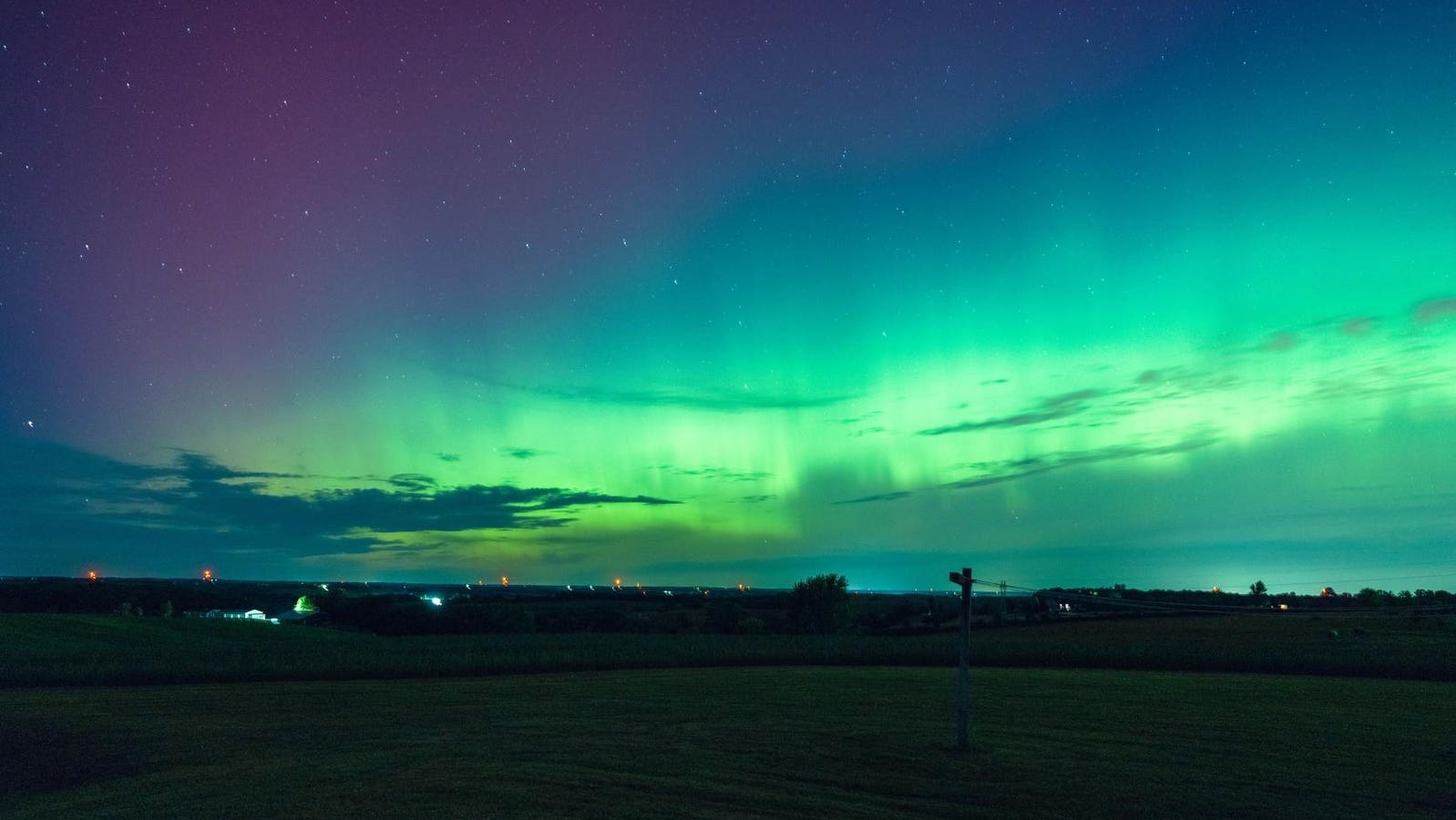Aurora Borealis: Lights Up Across the UK Tonight?

The chance to witness the Northern Lights, alongside the Perseids meteor shower, may be gracing the skies tonight, as scientists predict the continuation of geomagnetic storm conditions into tomorrow.
Key Facts:
The National Oceanic and Atmospheric Administration (NOAA) has issued a Northern Lights forecast for the week, predicting continued geomagnetic storm conditions into Tuesday. However, space weather is inherently unpredictable, making definitive predictions for optimal viewing conditions difficult.
A series of coronal mass ejections (CMEs) â eruptions of solar material â have reached Earth over the weekend. These CMEs are expected to continue passing by until Tuesday, potentially leading to visible auroras in various parts of the continental US and even parts of the UK.
Following a strong G4 geomagnetic storm on Monday, which reached a high Kp index of eight â stronger than initially anticipated â some of the most vibrant displays of the Northern Lights since May have been observed.
Monday nightâs aurora borealis has a Kp index of six, indicating the lights will expand further from the poles, becoming "quite bright and active," according to NOAA.
While the Perseids meteor shower reached its peak on Sunday night into early Monday morning, the spectacle is set to continue until 1st September, offering excellent viewing opportunities, particularly in the days surrounding the peak.
Where to Catch the Northern Lights Tonight:
Although predicting the exact location of the aurora is challenging, forecasts suggest the best viewing opportunities on Tuesday night will be in Canada and Alaska. However, several continental US states within the predicted aurora view line include: Washington, Oregon, Idaho, Montana, Wyoming, North Dakota, South Dakota, Nebraska, Minnesota, Iowa, Wisconsin, Illinois, Michigan, New York, Vermont, New Hampshire, and Maine.
Tips for Optimal Aurora Viewing:
For the most impactful experience, experts recommend:
Finding a location as close to the poles as possible, minimising light pollution from cities.
Checking weather forecasts for clear skies and optimal viewing conditions.
Seeking vantage points like hilltops for unobstructed views.
Observing between 10pm and 2am when the aurora is typically most active.
Photographing the Northern Lights:
Even smartphone cameras are sensitive enough to capture the aurora, even when it's not visible to the naked eye. For best results, use night mode and increase the exposure time.
Key Background:
The current geomagnetic storms are a result of Solar Cycle 25, the sun's 11-year cycle of activity. This cycle, which began in December 2019, is predicted to reach its peak between late 2024 and early 2026. While the maximum hasn't yet occurred, the sun's activity has exceeded scientists' predictions, potentially leading to even more geomagnetic storms and auroras in the coming months.
Surprising Fact:
According to NOAA, Solar Cycle 25 likely reached its highest sunspot number on August 8th, with an estimated peak of almost 300 sunspots. This would mark the highest number since at least July 2002.
Related Articles:
"Northern Lights And Perseid Meteor Shower Put On A Celestial Show Overnight (Photos)" (Forbes)
"Perseid Meteor Shower: Why Astronomers Recommend Putting Your Phone Away For This Weekendâs Show" (Forbes)





